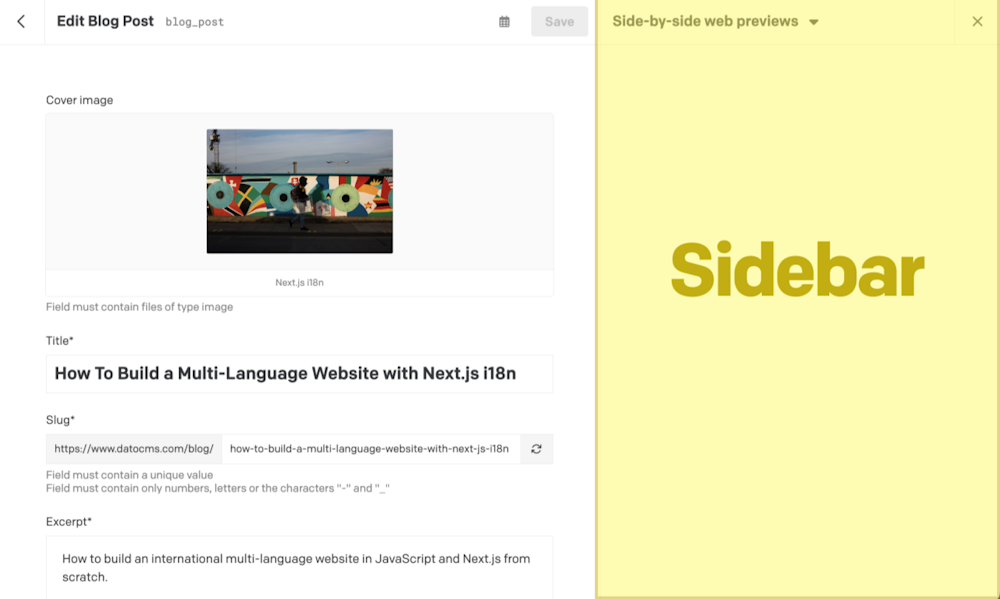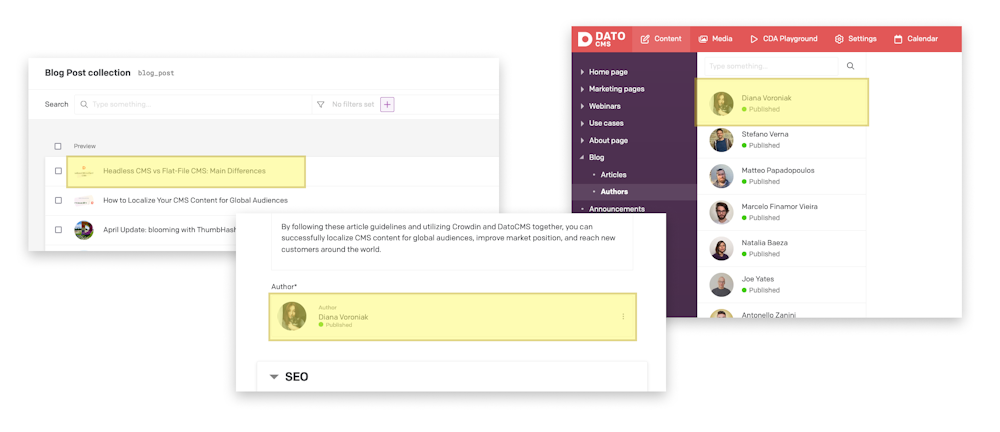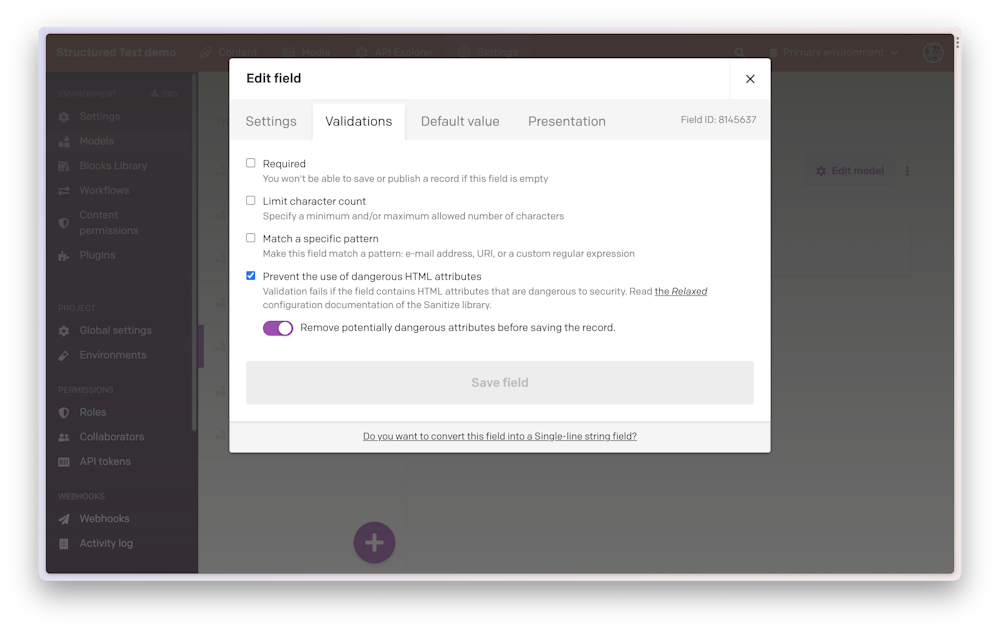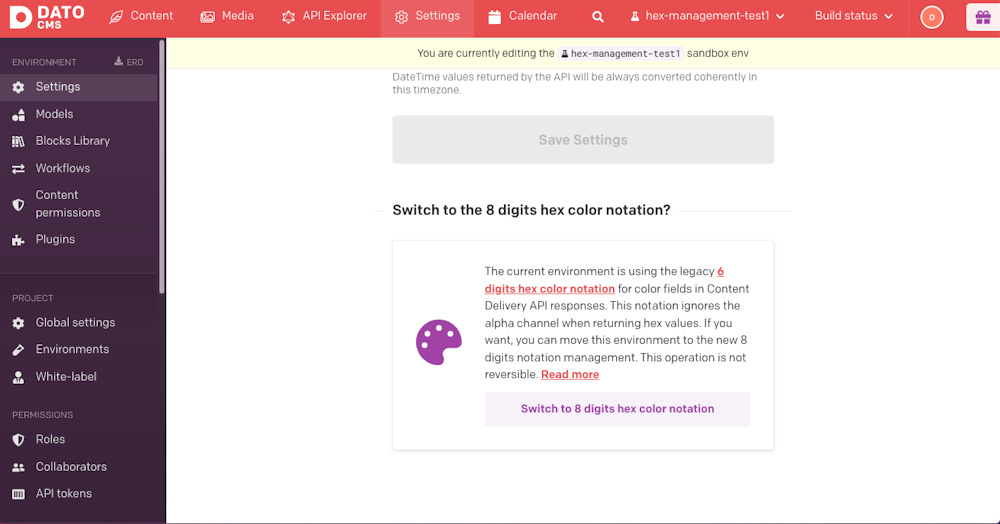New hooks available in Plugins SDK
We've super excited to announce we've added a couple of new very useful hooks in our Plugin SDK! 🥳
Custom sidebars
The first one lets you add custom sidebars next to your records form:

You can take a look at a real-world example of this hook in the upgraded Web Previews plugin, which now can offer your editors side-by-side previews of unpublished/draft content, directly within DatoCMS:
Custom record presentation
The second hook enables you to customize the presentation of your records according to your specific needs. This level of flexibility empowers you to create a unique and tailored user experience that aligns with your goals.

The buildItemPresentationInfo hook can be used in numerous ways. For example, you can:
Combine multiple fields to present a record;
Generate a preview image on the fly;
Perform asynchronous API requests to third parties to compose the presentation.

